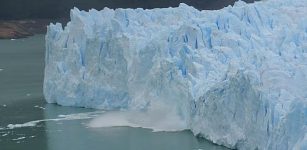Hunga Ha’apai Volcano Blasted Sulfate Aerosols And Enormous Amount Of Water Vapor Into The Stratosphere
Eddie Gonzales Jr. – MessageToEagle.com – The January 15, 2022 eruption of underwater Hunga Tonga–Hunga Ha’apai volcano triggered a tsunami that flattened buildings, displaced residents, and resulted in at least four deaths across the islands of Tonga.
Hunga Tonga–Hunga Ha‘apai volcano erupts on 14 January 2022 in this still from a video posted to social media. Credit: Tonga Geological Services
The powerful blast sent waves rippling throughout Earth’s oceans and atmosphere, with tsunami waves causing additional damage and casualties thousands of kilometers away, including two deaths in Peru.
Researchers around the world have been studying and learning from the catastrophic event. Now, in a study published in Geophysical Research Letters, Schoeberl et alshed light on the fate of a record-breaking amount of water vapor—up to 150 teragrams, or 150,000,000,000 kilog rams—shot into Earth’s stratosphere by the eruption.
The water vapor was part of a huge plume of ash, gas, and steam that at its highest, billowed 58 kilometers into the sky. Months after the eruption, elevated levels of water vapor and sulfur-rich aerosol particles remained layered in the stratosphere.
To clarify how these water vapor and aerosol layers formed and evolved over time, the researchers used data collected from January 15 through July 1 2022 by NASA’s Microwave Limb Sounder instrument aboard the Aura satellite. They also developed a model incorporating several factors, including tropical atmospheric temperatures, to simulate the post-eruption fate of the water vapor.
Their analysis suggests that after the eruption, the stratospheric water vapor and sulfate aerosols began to separate from each other, forming two distinct but overlapping layers by mid-February. These layers continued to separate through the end of June, with the water vapor rising in a manner consistent with normal upwelling residual velocity and the aerosols settling gravitationally. A surprising result was that the mid-stratospheric eruption aerosols and water stayed in the Southern Hemisphere for 5.5 months, with very little material moving north of the equator.
The data also revealed the development of an anomalous 3- to 4-Kelvin temperature decrease in the mid-stratosphere through March and April, which appears to have been caused by the infrared cooling effects of the lofted water vapor.
The researchers suggest that the high altitude of the eruption plume helps explain why other recent volcanic eruptions have not sent nearly as much water vapor into the stratosphere as Hunga Tonga–Hunga Ha’apai did.
Written by Eddie Gonzales Jr. – MessageToEagle.com Staff











